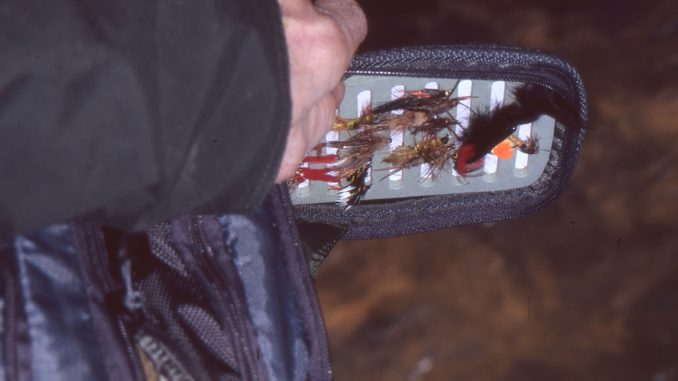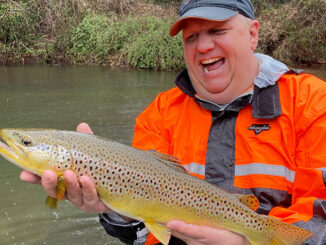
In late fall and winter, it is vital to keep in mind the fact that fish are cold-blooded creatures. That means that whatever the fisherman’s preferred means of taking trout — flies, other artificials or natural bait — the operative words are slow and deep.
To make sure your bait or lure is bumping the stream’s bottom, addition of a split shot or two, possibly some lead-core line for fly fishermen, or other means of getting the hook down in a hurry is critical. Once bouncing along the bottom, work things as slowly as possible, keeping in mind that trout aren’t going to chase dinner halfway across a pool, and that anything moving faster than the stream’s flow is breaking the speed limit.
As for what works best, when it comes to artificials and bait, just keep in mind what is likely to be available in the trout’s environment. With natural bait, earthworms have to top the list, with their outsized cousins, night crawlers, being a prominent part of the picture. Meal worms, salamanders and crayfish are also possibilities, as are non-natural options such as kernels of corn, salmon eggs and commercially prepared baits. If you are a bait fisherman, just be sure you read the regulations carefully and use only what is allowed and only where permissible.
For the fly fisherman, nymphs and streamers will be the best ticket to success most of the time. The only exceptions might come on sunny days when there is a hatch, usually sometime between noon and 3 p.m. that brings some surface activity. Such hatches are usually small insects such as midges or blue-wing olives. It’s good to have some of these, just in case.
As veteran Robbinsville angler Marty Maxwell said, “If you can get small enough, you can catch fish in midge hatches.”
As a rule, however, old standby nymph patterns such as Tellico, Gold-ribbed Hare’s Ear and Copper John, preferably tied on a bead-head hook, will serve you well. For streamer fishermen, a Black or Olive Matuka, Wooly Bugger or Muddler Minnow can be productive.
When it comes to spin-casting, standbys such as Panther Martins, Mepps Aglias or Beetle Spins are just the ticket. Along with these tried-and-true standards, don’t overlook the effectiveness of a long-established local favorite, a Yellarhammar fly tied on a long-shank hook trailing a gold Colorado blade. The late Ed Chambers of Bryson City swore by this rig and fished it almost exclusively. For spin fisherman, don’t forget that your offerings are perfectly legal in delayed-harvest waters or the Great Smoky Mountains National Park. You just need to clip two of the hooks off to make your lure a single-hook device. Also remember to mash the barb in waters with barbless hook requirements.




Be the first to comment